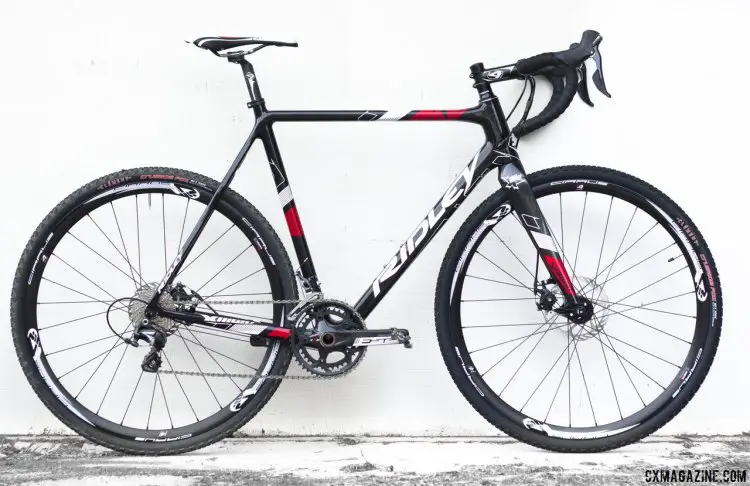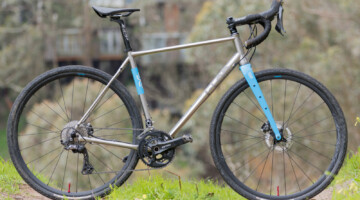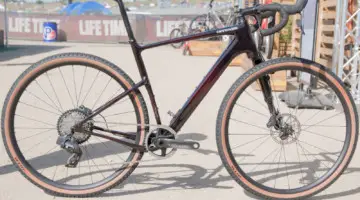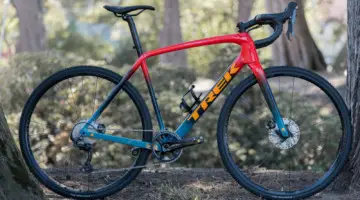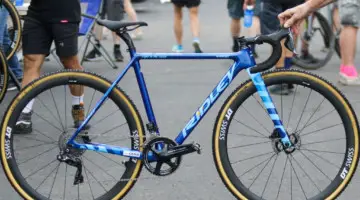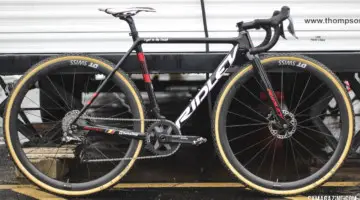Several months ago, Ridley unveiled the latest on their plans for next season’s cyclocross lineup, which surprised the cyclocross world with only disc, no cantilever models. As a cyclocross manufacturer, Ridley hardly needs an introduction, with scores of European and American riders, such as Ellen Van Loy and Zach McDonald, riding them in their careers.
Today we offer the full review of the Ridley X-Night 30 from Issue 27. For extensive reviews just like this one, be sure to order your backcopy today, which is also available on Uberflip, in the App Store on iTunes, and on Google Play for Android.
2014 marks the ten-year anniversary of Ridley’s breakthrough year, when the company expanded well beyond the borders of Belgium and made their presence known to a larger international market. Today, you’d be hard-pressed to find a top-level race in Europe without a Ridley racer on the podium. Although the Belgium-based bicycle company is not the oldest, it knows more about professional cyclocross than perhaps any other in the industry, and Ridley’s sponsored athletes continue to win throughout the world.
You’d be forgiven if you thought that the company’s bikes are better-suited for pros than for workingmen and women, but a quick glance at its extensive lineup reveals a line of 18 models, with something for everyone. Their 2015 X-Ride Disc falls directly into the workingman category as a race-worthy bike at $1,800, and their X-Bows are even less at $1,450: not too shabby for a steed with a carbon fork.
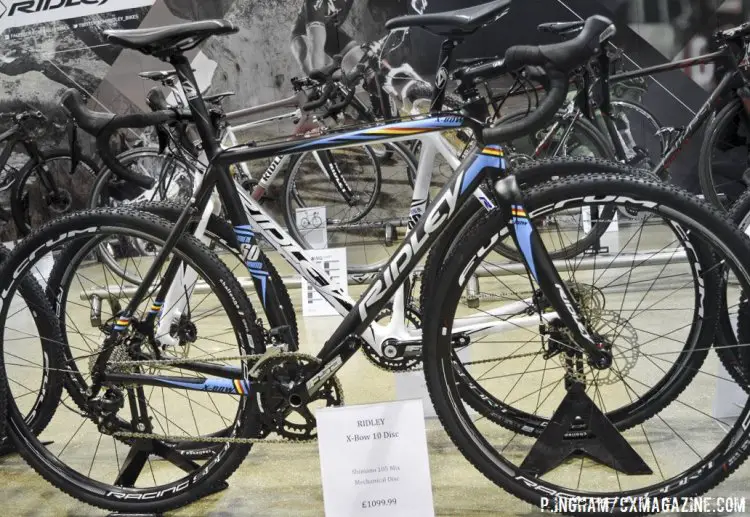
Ridley created an inspiring paint job with their 2016 X-Bow Disc 10: Matte black with Belgian blue and the Belgian stripes. © Philip Ingham / Cyclocross Magazine
Our current test, however, looks at the upper echelon of the spectrum with the Ridley X-Night 30 Disc. Sure, the X-Night is raced by Kevin Pauwels, Klaas Vantornout and Bart Wellens, but could it also be a viable option for the workingman racer?
The Frame of the Ridley X-Night 30:
The top-shelf X-Night has typically been a model tailored specifically to top racers. Traditionally speaking, its aggressive, high bottom bracket, high-modulus carbon, and integrated, stiff seatmast made the bike race-oriented for aggressive riders on technical courses—although the last feature on that list also made it difficult to lend to a buddy or to resell.
Just prior to the 2013 World Championships in Louisville, Ridley redesigned its flagship X-Night, shedding the integrated seatmast, dropping the bottom bracket height a bit, and shortening up the wheelbase and head tube. The changes are in contrast to the direction Focus went with its Mares frame, but the interesting thing is that the frames have nearly met in the middle with similar geometries. They’re not exactly the same geometries, and comparing the Ridley 56 to a Focus Medium, the Ridley’s 56cm top tube is 5mm longer, its bottom bracket is 1mm higher at a 64mm drop, the head tube is 20mm longer, and the head angle is one degree steeper (although the Focus has a longer rake). All of these changes, with the exception of the head angle, are quite minor. Comparing the Ridley X-Night to the Raleigh RXC Pro, the geometries are also similar, with the Raleigh having a .5-degree slacker seat angle and 10mm shorter head tube.
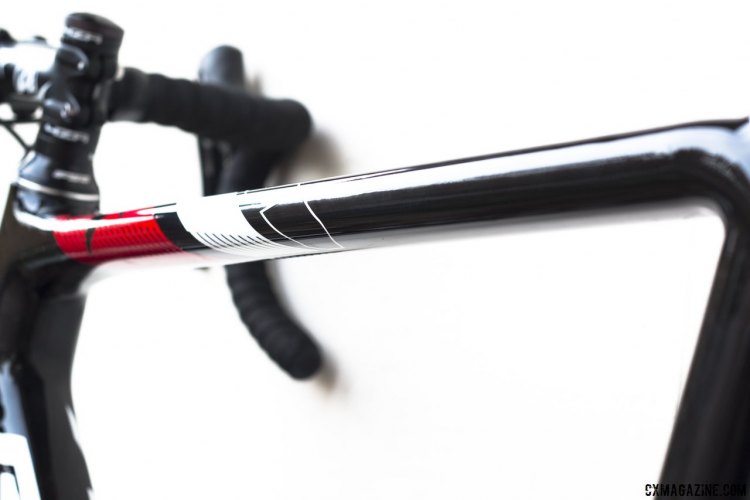
The geometry of the Ridley X-Night 30 Disc Cyclocross Bike is quite comparable to the overall direction in trends: low bottom brackets and short chainstays. © Cyclocross Magazine
The important note here is that with the growing popularity of cyclocross racing and bikes, companies have settled on a sweet spot of geometry that’s really quite narrow. Gone are the days of really high bottom brackets and long chainstays. However, it’s worth noting that other sizes of the X-Night vary in some atypical ways. The smaller sizes have higher bottom brackets, and the head tube angle does not change throughout all sizes.
What’s mainly left to analyze are subtle changes, ride-quality difference, frame features, and of course, component and build choices. Oh, and frame pedigree and aesthetics. Those matter too, right? If you think so, Ridley aims to please, because it has a custom-finish program that allows you to customize the color scheme and take delivery at your local shop in a few weeks. How cool is that?
It’s worth noting that you can get the second-tier carbon X-Fire with a nearly similar build with the X-Fire 10 bike. What are the differences? Besides a few more cost-effective components on the X-Fire like the crankset, the frame is really the biggest difference. The X-Fire frameset is heavier and a bit more “traditional.” It hasn’t quite inherited the “modern” changes of the X-Night. The bottom bracket remains higher and the head tube is longer, while the seatpost is oversized at 31.6mm (the X-Night is 27.2mm).
[Ed. Note: Earlier in 2015, Ridley announced that they were doing away with the X-Fire branding, with the X-Night SL acting as the top-tier model and the X-Night (non-SL) expanding to play the past role of the X-Fire. The change ushered in Ridley’s commitment to a geometry with a lower bottom bracket.]
On paper, the X-Night is closer to what we prefer and are used to, but only riding would verify whether the X-Night lives up to expectations.
The Build of the Ridley X-Night 30:
Ridley took a no-nonsense approach to putting together the X-Night 30: The Shimano Ultegra 6800 11-speed component group and 4ZA cockpit focuses on affordable performance, while the 4ZA Cirrus Comp clincher wheels keep a European flair to your ride.
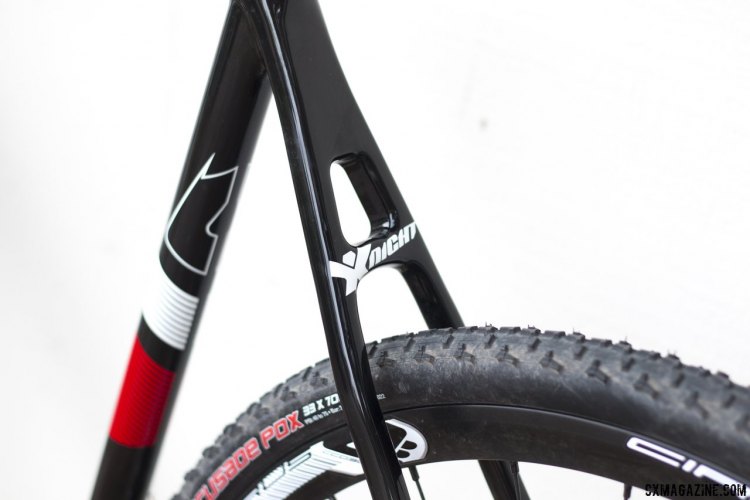
Ridley’s thin seatstays surround the Clement PDX tubulars of our supplied test model. © Cyclocross Magazine
There’s not much to say about Ultegra 6800. The stuff works once you dial in the front derailleur. Today’s components perform so well that it’s mostly a matter of ergonomics and loyalty. Many racers love SRAM for good reason, and they tend to be lighter, but the Ultegra group, with the coated cables and long-armed front derailleur, shifts with incredible ease and stays quiet, with the front shifter trims and rubber front derailleur cage pads.
Our test bike ventured a bit from published specs of Fulcrum wheels, Rotor crankset and Challenge tires, something not unusual in the industry, and instead we were supplied with Clement PDX clinchers, an FSA Team Issue carbon crankset and 4ZA wheels coming as stock equipment on our version of the X-Night 30.
Braking was handled by the Avid BB7S brakes, with dual pad adjustments to keep the 160mm front and 140mm rear rotors spinning freely.
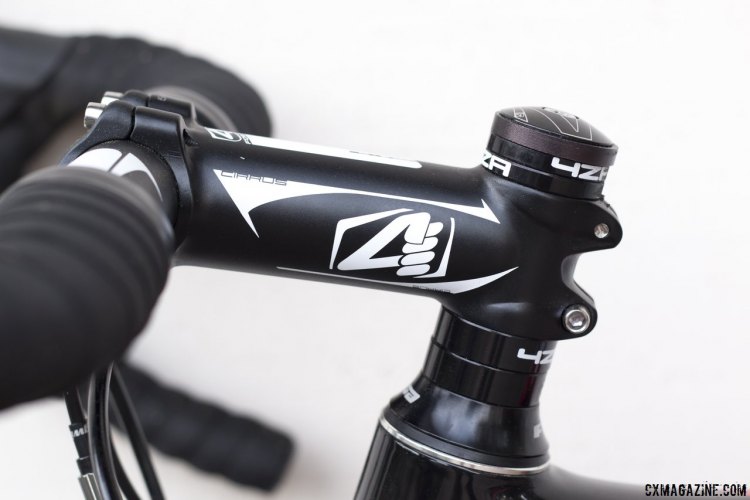
The Ridley X-Night build was finished off with 4ZA components, including the cockpit, seatpost and saddle. © Cyclocross Magazine
Before swinging a leg over the bike, there was only one item that caught our eye: The two side-by-side-bolt seatpost. Ridley and 4ZA know cyclocross, but we’ve had plenty of bad experiences with such designs that resulted in painful saddle positions. Would this post be any different?
See the following page for our ride and verdict.












